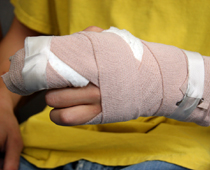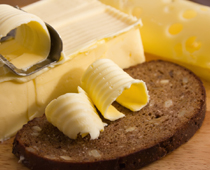
Ask the AI Tutor
Need help with Speech Marks? Ask our AI Tutor!
AI Tutor - Lucy
Connecting with Tutor...
Please wait while we establish connection

How do you know if someone is speaking when you read a book?
Speech Marks
Learn how speech marks show when someone is talking. Spot where they start and end, and which punctuation sits neatly inside them.
1 .
2 .
3 .
4 .
5 .
You've made my floor dirty said Larry. Which part of this sentence should be in speech marks?
"You've made my floor dirty"
"You've made my floor dirty said Larry"
You've made my floor dirty "said Larry"
You've "made my floor dirty" said Larry
The word 'said' is the most popular word to use when somebody is speaking.
6 .
7 .
Which of these answers is perfect?
"That's a noisy baby, said the father.
"Is that baby asleep?
How long will the baby sleep for? asked the doctor.
"Be quiet, the baby is sleeping," said the mother.
Whenever we write speech, we always begin with a capital letter, finish with some form of punctuation and open and close speech marks.
8 .
9 .
**Unlimited Quizzes Await You! 🚀**
Hey there, quiz champ! 🌟 You've already tackled today's free questions.
Ready for more?
Ready for more?
🔓 Unlock UNLIMITED Quizzes and challenge yourself every day. But that's
not all...
not all...
🔥 As a Subscriber you can join our thrilling "Daily Streak" against other
quizzers. Try to win a coveted spot on our Hall of Fame Page.
quizzers. Try to win a coveted spot on our Hall of Fame Page.
Don't miss out! Join us now and keep the fun rolling. 🎉
**Unlimited Quizzes Await You! 🚀**
Hey there, quiz champ! 🌟 You've already tackled today's free questions. Ready for more?
🔓 Unlock UNLIMITED Quizzes and challenge yourself every day. But that's not all...
🔥 As a Subscriber you can join our thrilling "Daily Streak" against other quizzers. Try to win a coveted spot on our Hall of Fame Page.
Don't miss out! Join us now and keep the fun rolling. 🎉
















